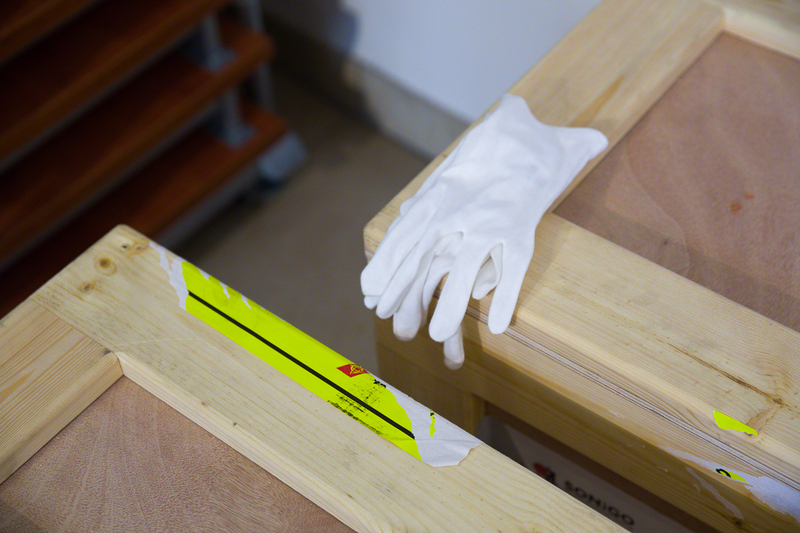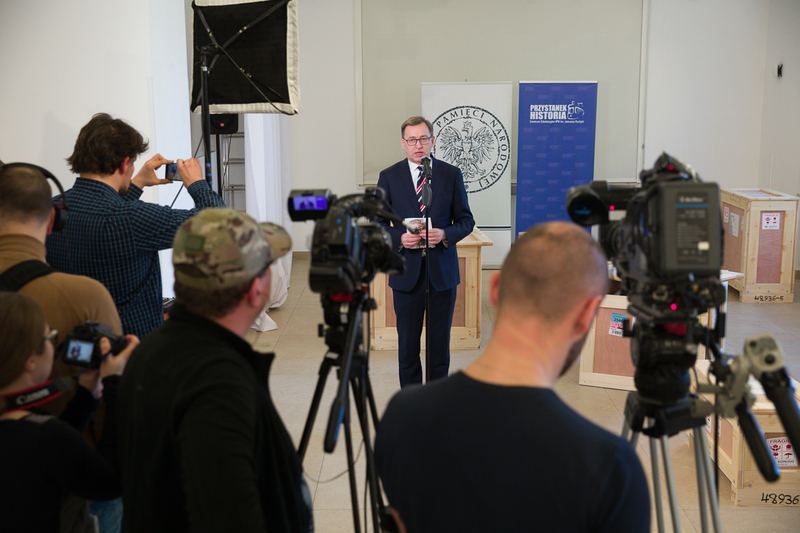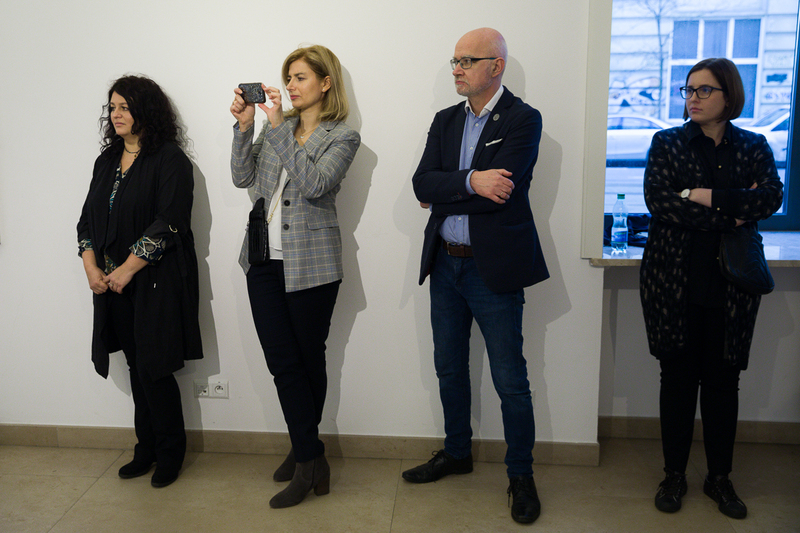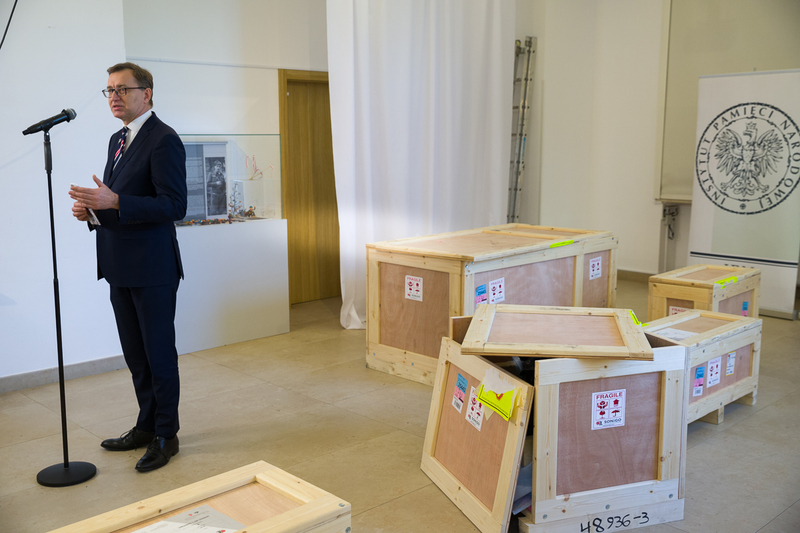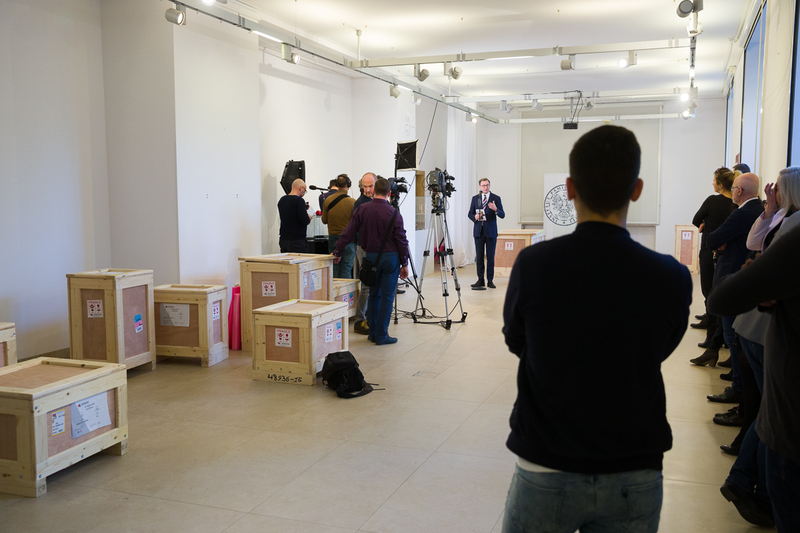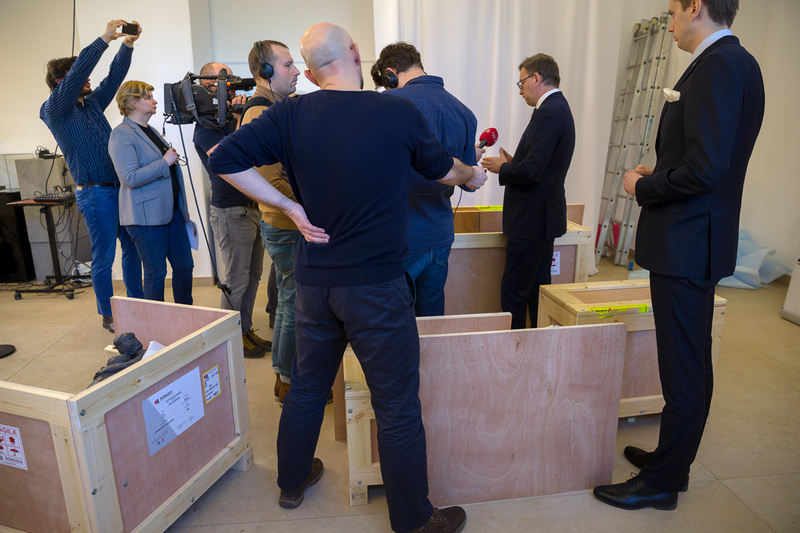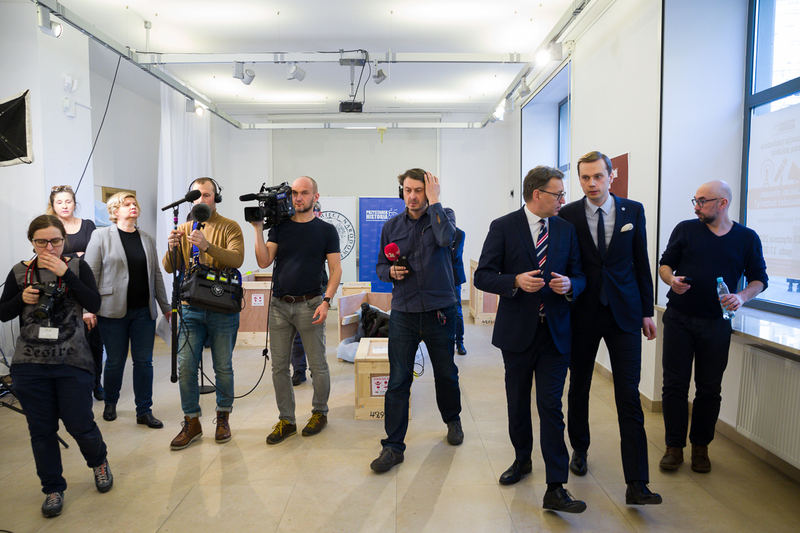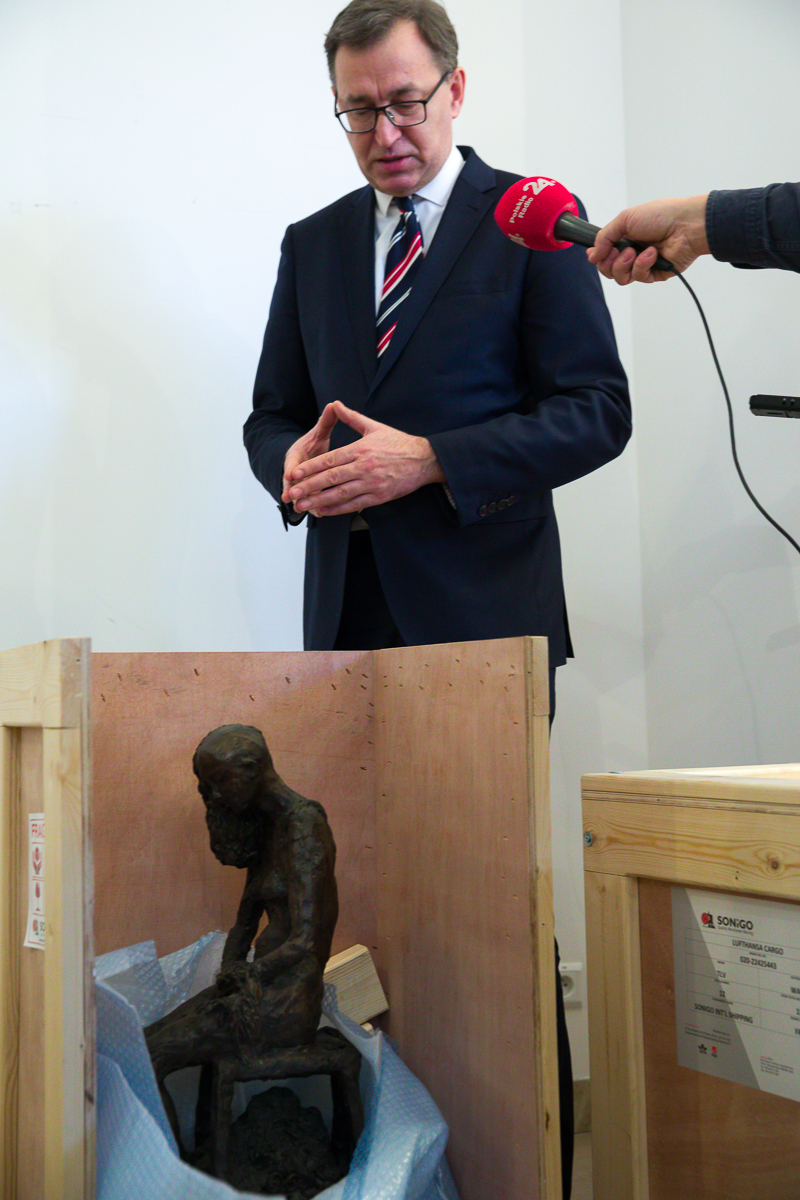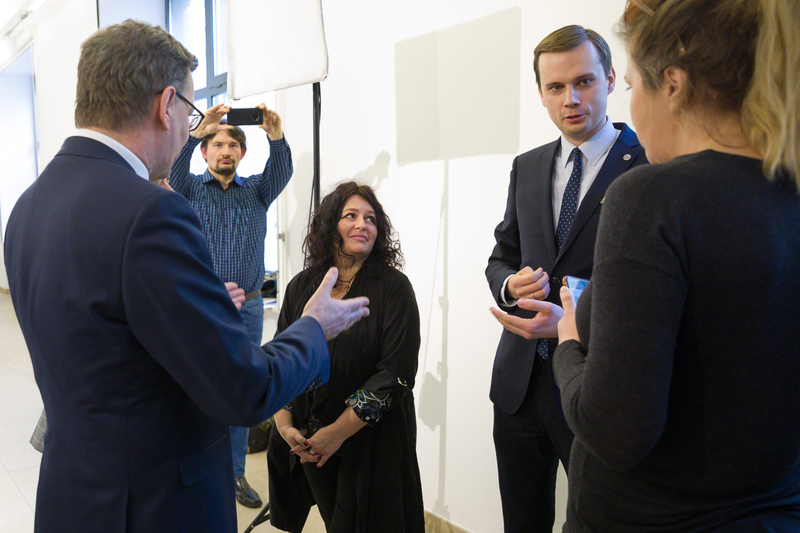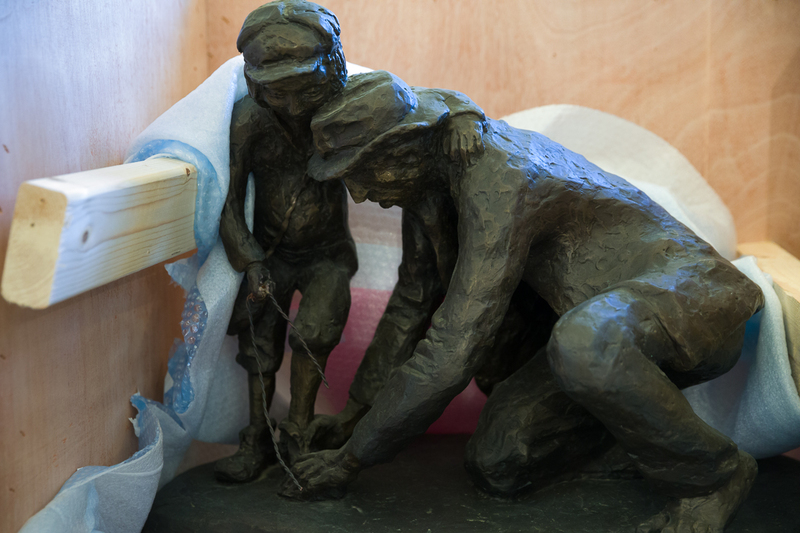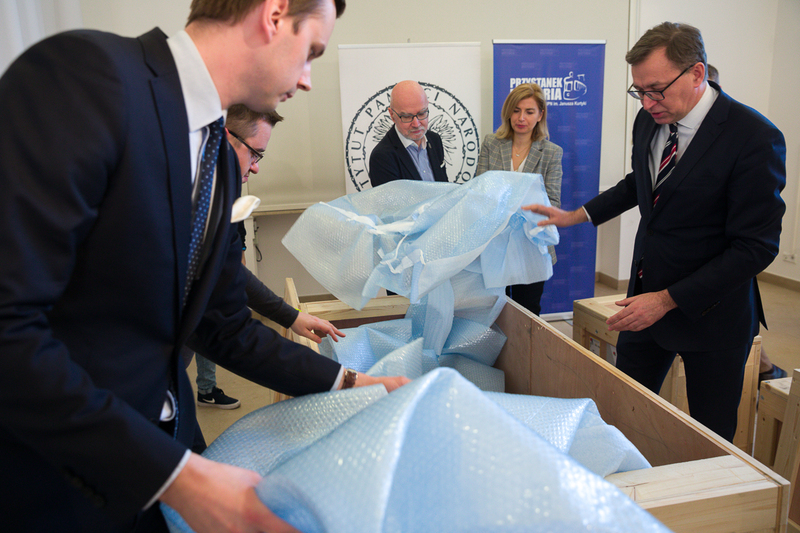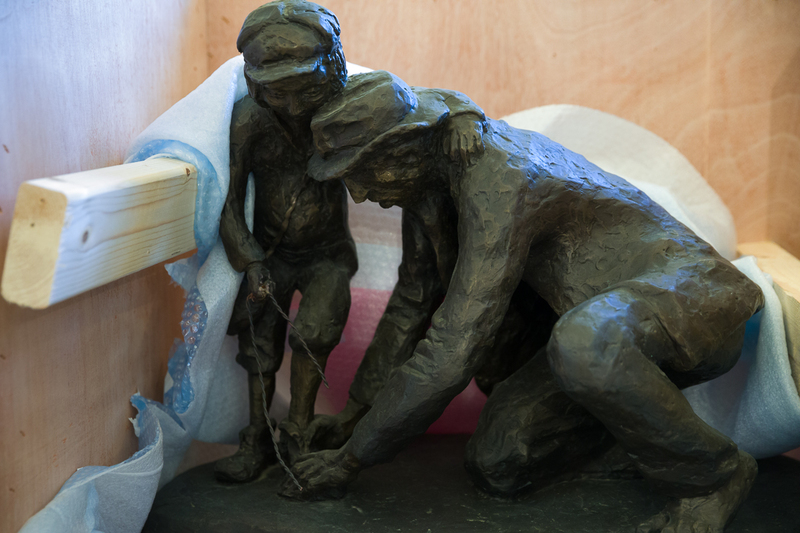"Nobody cared at all," the sculptor once commented on the media response to a press conference in Tel Aviv, which he called to present his work depicting scenes from the German "death factory" in Treblinka. These were the beginnings. Since then, these amazing works of art and memory have been the object of emotion and reflection for thousands of viewers.
The originator of bringing the sculptures by Samuel Willenberg to Poland is Blanka Kamińska-Pienkos from the Division of International Information and Relations of the IPN. The management quickly accepted this project. It is indeed a dignified commemoration of Holocaust victims on the 75th anniversary of the liberation of Auschwitz prisoners.
It is early afternoon at Warsaw's IPN “History Point” Educational Centre at 21/25 Marszałkowska Str. Journalists with cameras and microphones hang around the exhibition hall. All of the sculptures can be found in the Internet, and yet seeing them in reality is something completely different. Sun rays fall on bright boxes, smelling of fresh wood, through exposed blinds. Everyone would like to participate in the opening of the trunks with treasures, even if they have seen it many times in the cinema.
„We want to fulfil the will of Samuel Willenberg,“ said the President of the IPN Dr Jarosław Szarek in front of the cameras. In Treblinka, the future sculptor met his history teacher from school in Częstochowa: “You’ve got to escape from here and tell the world what you’ve seen. That will be your duty”. The words uttered by Professor Merring can be found in Willenberg’s book Surviving Treblinka.
Samuel Willenberg died in 2016 as the last survivor of the rebellion in Treblinka. His wife - Krystyna carries on with his mission. The sculptures are in her custody. They are waiting to be placed in the Treblinka Museum to immortalize the memory of the murdered.
The President of the IPN presented four out of the 15 sculptures: the one depicting the rebellion in Treblinka, the father unlacing his son's shoe, the musicians, and perhaps the most touching sculpture - Rut Dorfman with her head half shaved. Behind each sculpture there is a tragic story. The author, being a prisoner, was forced to cut off women's hair before they were sent to the gas chambers. The Germans used human hair for straw mattresses on submarines, because they did not absorb moisture. This nineteen-year-old girl shortly after graduating from high school, sitting on a "hairdresser's chair", revealed her identity to Samuel. She knew what awaited her. She only asked if it would take long ...
Dr Jarosław Szarek recounted the fact that the Willenbergs had opened a new chapter in Israeli teaching about the Holocaust. Coming to Poland with Israeli youth, they did not evade contacts with Poles. They always talked about the good they experienced from their countrymen, although they never denied the shameful behaviour of some who lived on the "Aryan" side at the time. The President of the IPN emphasized that the Willenbergs are people of reconciliation.
The IPN is going to be looking after the sculptures for a year. From 29 January 2020, they will be available to the public at Warsaw's IPN “History Point” Educational Centre at 21/25 Marszałkowska Str., and then visit Krakow, Kielce, Szczecin, Gdańsk, Białystok, Lublin and Częstochowa. They will also be the subject of educational workshops for teachers and students.
